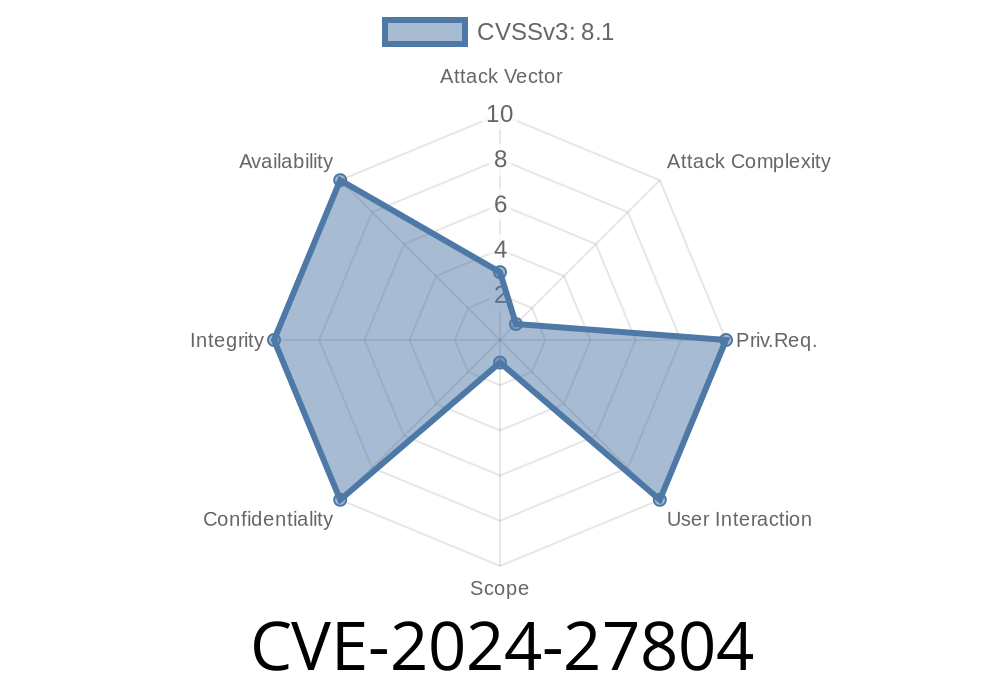Apple’s ecosystem is famous for strong security, but sometimes even big companies slip up. CVE-2024-27804 is one such example: a memory handling flaw that could have let malicious apps run arbitrary code as kernel, with complete control over your iPhone, iPad, Mac, Apple Watch, or Apple TV.
Here's an in-depth but straightforward look at this vulnerability, why it’s dangerous, its technical background, and how Apple fixed it.
macOS Sonoma up to 14.4 (fixed in 14.5)
Risk: An app—think a third-party app from the App Store or sideloaded—could exploit this bug to run unsandboxed code *as root* in the kernel. That means the attacker could bypass all device security, steal data, spy on your actions, or brick your device.
Apple said:
> “An app may be able to execute arbitrary code with kernel privileges. This issue was addressed with improved memory handling.”
(See the official security release notes here.)
How Did the Bug Work?
The official details are sparse, but from Apple security trends and community analysis, CVE-2024-27804 is almost certainly an out-of-bounds write or use-after-free memory bug in a kernel extension or system service.
In plain English:
By carefully crafting data or app requests, a hacker could trick the underlying operating system into writing or reading beyond the memory boundaries it was supposed to. That means the attacker could inject code or modify critical system data running in the highest-privilege part of the system—the kernel.
Example Exploit Scenario
Note: No public exploit code is currently available for CVE-2024-27804 as of June 2024, but here’s a simplified, illustrative Python-like pseudocode to show *the logic* behind this kind of flaw:
def vulnerable_kernel_driver(user_input):
# Hypothetical memory buffer of length 64
buffer = [] * 64
# Unsafe: Copies user data directly into buffer with no bounds check!
for i in range(len(user_input)):
buffer[i] = user_input[i] # Potential out-of-bounds write
# Attacker's input, deliberately longer than the buffer
evil_input = [x90] * 128 + [malicious_shellcode]
vulnerable_kernel_driver(evil_input)
# The shellcode now overwrites critical kernel structures
In reality: The issue might be buried in lower-level C or C++ code involving pointers. It’s common for attackers to use crafted file formats, IPC messages, or drivers to reach these bugs.
Brick or permanently damage the device
If chained with other vulnerabilities (for example, a drive-by browser exploit), this could lead to remote compromise.
Apple’s Patch: “Improved Memory Handling”
The only public statement is: “addressed with improved memory handling.”
Before
void kernel_copy(char* src, size_t len) {
char buffer[64];
memcpy(buffer, src, len); // no length check
}
After
void kernel_copy(char* src, size_t len) {
char buffer[64];
if (len > 64) len = 64;
memcpy(buffer, src, len); // safe!
}
Are You Vulnerable? How To Stay Safe
First, upgrade immediately.
Check your device version (Settings → General → Software Update on iOS/iPadOS; System Settings on Mac). Install these versions or newer:
- iOS/iPadOS: 17.5
macOS Sonoma: 14.5
If you’re behind, hackers or spyware vendors may target you with malicious apps that exploit this bug.
References and Further Reading
- Apple Security Updates for May 2024
- NIST NVD CVE-2024-27804 Entry
- The Anatomy of a Kernel Vulnerability (Project Zero)
Conclusion
CVE-2024-27804 is the kind of critical, low-level bug attackers dream of, but most users won’t have much to worry about if they update quickly.
It's another reminder to keep all your devices up to date: even "walled garden" systems get flaws, and memory mishandling is one of the most common and dangerous vulnerability types.
Stay safe—patch early, patch often!
*This article is exclusive content for Knowledge Assistant. If reposted, please credit the source link. For technical discussions or questions, reach out on Apple Security or infosec forums.*
Timeline
Published on: 05/14/2024 15:13:04 UTC
Last modified on: 07/03/2024 01:50:51 UTC
